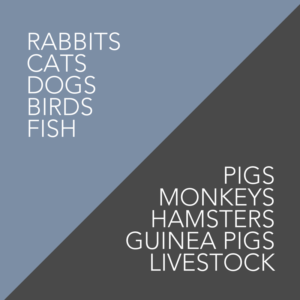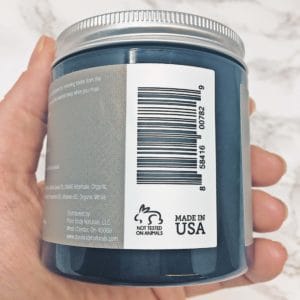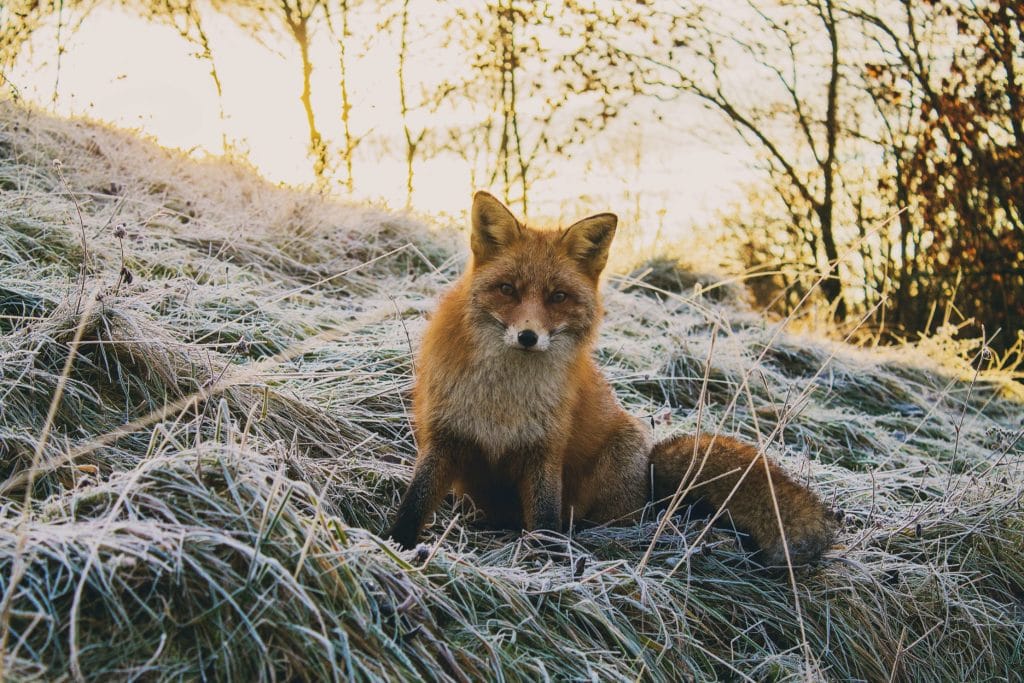Ready for this? Every year, roughly 115 million animals are used in product testing around the globe. It’s a sad and staggering statistic, especially when it’s not even necessary. Animals that undergo testing face experiments that are painful and inhumane.
The experiments that happen on animals sound like something out of a horror movie. Their eyes and skin get exposed all types of chemicals, they are forced to eat or breath toxic fumes, and they even get injected with toxic ingredients to see if there are any side effects or long term effects that might apply to humans.

And here’s the thing, it’s not just mice and rats that are used in tests (which might first come to mind). They also use animals that are common household pets and farm animals, including: rabbits, cats, dogs, birds, fish, guinea pigs, hamsters, pigs, monkeys and livestock.
The medical, pharmaceutical, cosmetic and household product industries are the main contributors to animal testing. Luckily in the United States, cosmetics are not required to have any testing performed on animals. Some countries have even banned it completely. Unfortunately, a ton of popular brands STILL test everything from face wash to perfume on animals, even though it’s unnecessary.
Why Does it Continue?
You’ve heard the term, “old habits die hard”, right? Well that couldn’t be more true here. While rules and sentiments surrounding animal testing continue to change around the world, implementing that change across companies and industries that have relied on these practices for decades requires time and determination. There is also still education and awareness to be done across the globe regarding the modern, non-animal ways to complete product testing.
What Can You Do?
There are a few things you can do to better ensure the products you buy are not tested on animals. The first thing is to check for one of the three certified Leaping Bunny logos, which are:

You’ll usually be able to find the logo directly on the product label. However, there are times that a product label doesn’t include a certified cruelty-free logo, but is still cruelty-free. So if you are not familiar with the product or company, you might want to do a little more research to be sure.
 The first place you can check is the company website. Many brands will include their cruelty-free testing policy directly on their site. If you don’t see anything there, or would prefer to reach out with additional questions, you can contact/email them to ask. Any transparent company should tell you directly. You can help do your part by using brands that do not use animal testing on their products. Or take it one step further by DIY’ing some of your products! Making them yourself can help reduce the chemicals and toxins in your home and decreases packaging waste.
The first place you can check is the company website. Many brands will include their cruelty-free testing policy directly on their site. If you don’t see anything there, or would prefer to reach out with additional questions, you can contact/email them to ask. Any transparent company should tell you directly. You can help do your part by using brands that do not use animal testing on their products. Or take it one step further by DIY’ing some of your products! Making them yourself can help reduce the chemicals and toxins in your home and decreases packaging waste.
If you’re feeling inspired to take action against animal testing, you can sign this petition urging the United States legislation to ban ALL cosmetic tests performed on animals.
